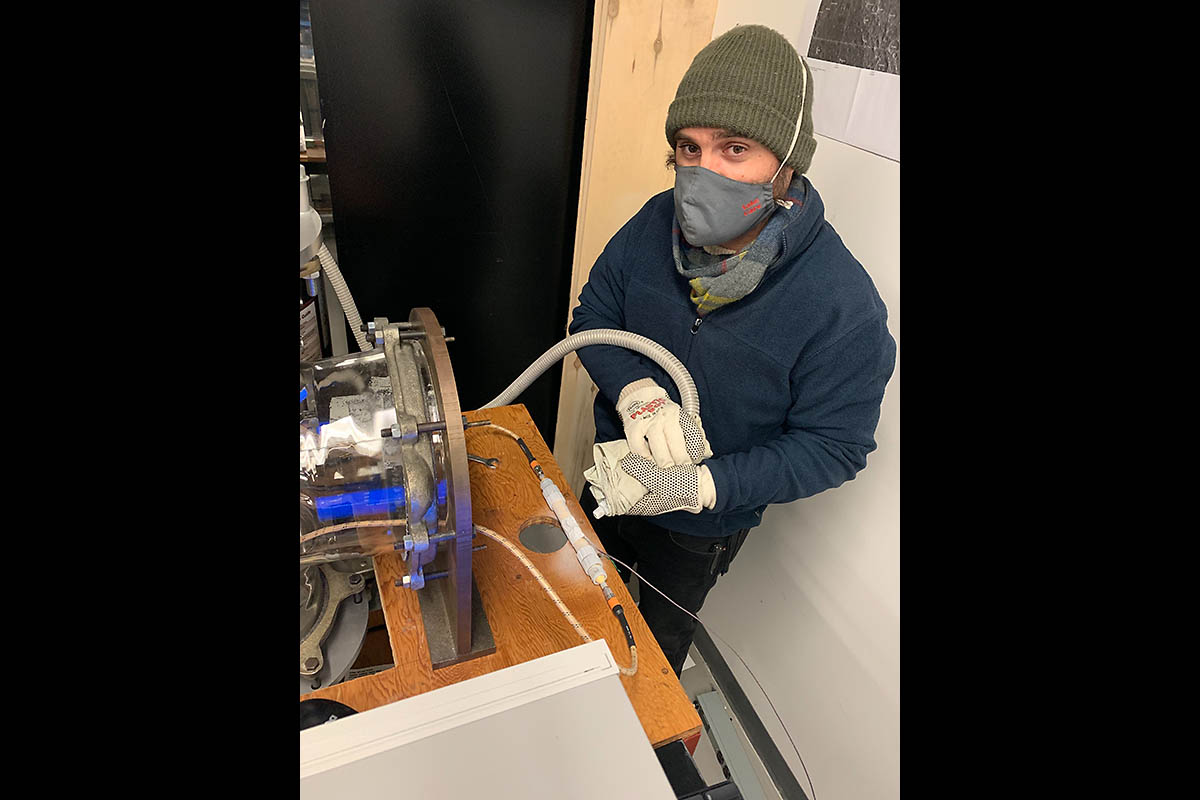Isaac Smith of Toronto’s York University bundled up while working in a lab, freezing smectite clays with liquid nitrogen to test how they respond to radar signals. The results have challenged the hypothesis that subsurface lakes can be found at Mars’ south pole. (York University/Craig Rezza)
Home Isaac Smith of Toronto’s York University bundled up while working in a lab, freezing smectite clays with liquid nitrogen to test how they respond to radar signals. The results have challenged the hypothesis that subsurface lakes can be found at Mars’ south pole. (York University/Craig Rezza) Isaac Smith of Toronto’s York University bundled up while working in a lab, freezing smectite clays with liquid nitrogen to test how they respond to radar signals. The results have challenged the hypothesis that subsurface lakes can be found at Mars’ south pole. (York University/Craig Rezza)



